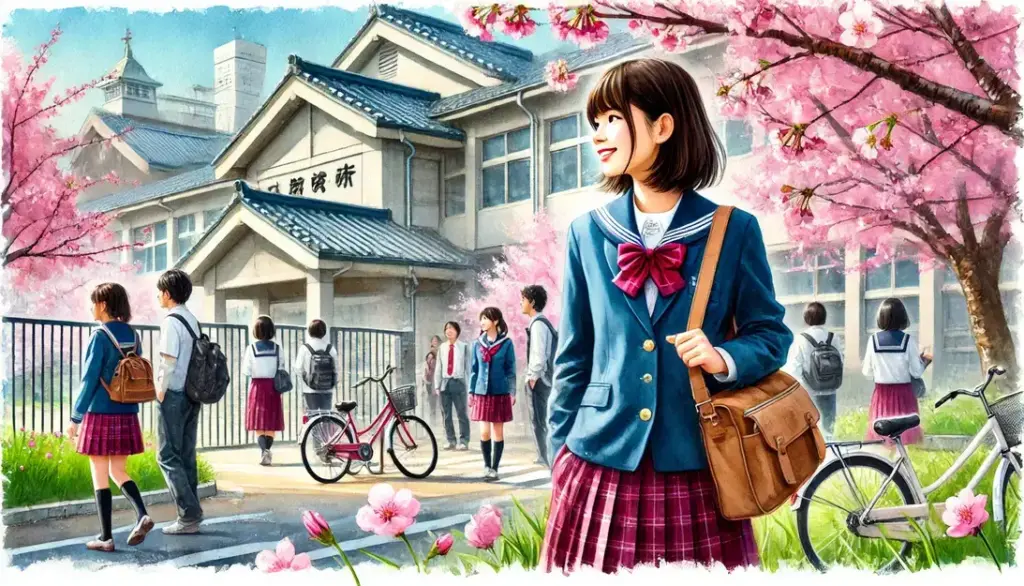High school life in Japan offers a unique blend of tradition and modernity that shapes students’ experiences. From the early morning commute to the structured school day, these students navigate a world that prioritizes discipline and hard work. Unlike many other countries, Japanese high schools require students to wear uniforms and actively participate in school cleaning duties, fostering a sense of community and responsibility.
Students attend classes for nearly 240 days a year, often juggling their studies with extracurricular activities and preparations for entrance exams. The school culture is deeply rooted in respect and consideration, influencing how students interact in and out of the classroom. In this post, we’ll explore what makes being a high school student in Japan so special, highlighting differences from educational systems around the world. Whether you’re captivated by Japanese culture or curious about student life, there’s much to discover about this fascinating journey.
Overview of Japanese High School System
The Japanese high school system is unique, focused on academic excellence and personal growth. It typically lasts for three years, where students immerse themselves in a structured and disciplined environment. Let’s break down the key elements that define this crucial stage in a young person’s life.
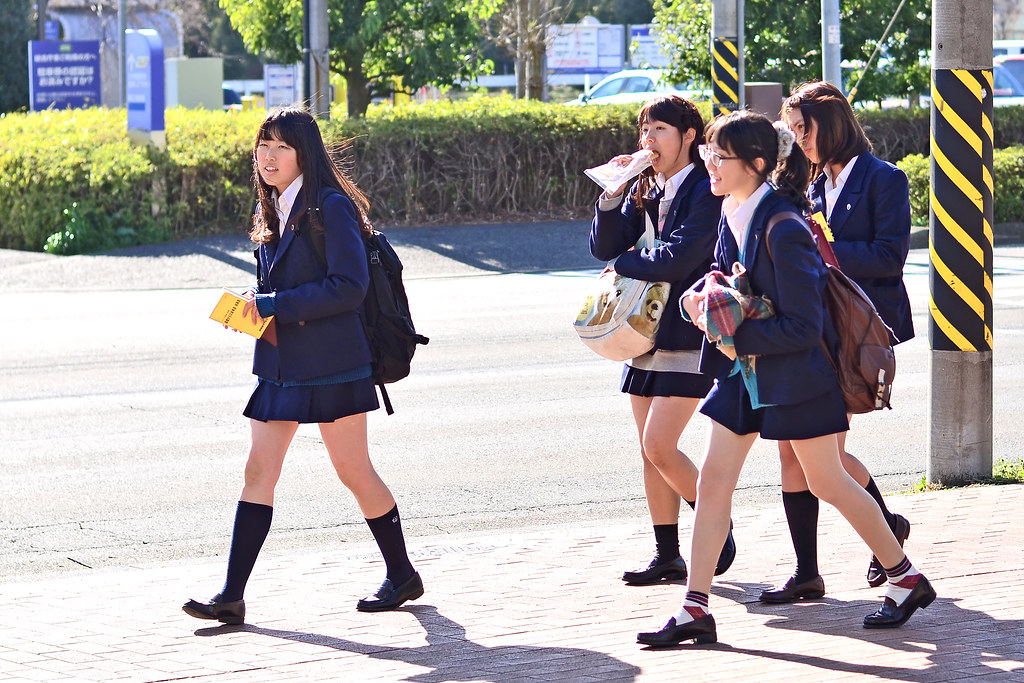
Duration and Structure of High School
High school in Japan lasts for three years, catering to students typically aged 15 to 18. This stage is often considered pivotal, as it prepares students for university or vocational paths.
The school year begins in April and runs through March, aligning with the Japanese seasonal calendar. Classes generally start around 8:30 AM and can extend well into the afternoon, often including extracurricular activities. With nearly 240 school days each year, students engage in rigorous academic schedules that cover various subjects, including mathematics, science, literature, and foreign languages. The format encourages both individual study and collaborative learning experiences.
While students do take exams and submit homework regularly, there’s also a significant emphasis on group projects and presentations. This fosters teamwork and communication skills, preparing them not only for higher education but adult life.
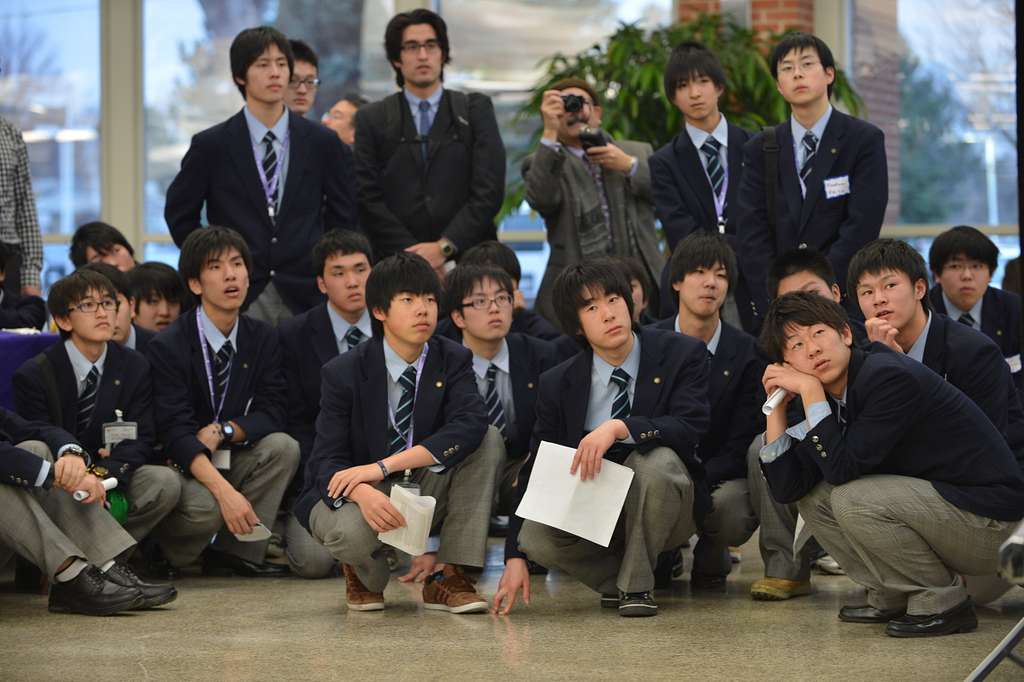
Admission Process
Getting into Japanese high schools can be quite competitive. Students usually have to take entrance examinations to secure a spot at their desired school. Each high school sets specific tests that may include subjects like mathematics, Japanese, and English, among others.
Here’s a brief overview of the typical admission process:
- Entrance Exams: Most public and private schools require students to take entrance exams, which assess their academic abilities.
- Application Submission: Parents typically complete an enrollment application, submitting the student’s recent school records and other required documents (Japan High School Application Requirements).
- Interviews: Some schools may also conduct interviews to gauge the student’s motivation and compatibility with the school’s values.
- Results Notification: Finally, students receive their results, often leading to either celebration or disappointment, making this a high-stress period for many families.
This competitive landscape reflects the societal values placed on education and achievement in Japan. For more insights on the educational structure, you can check out the Japanese Educational System for a comprehensive view.
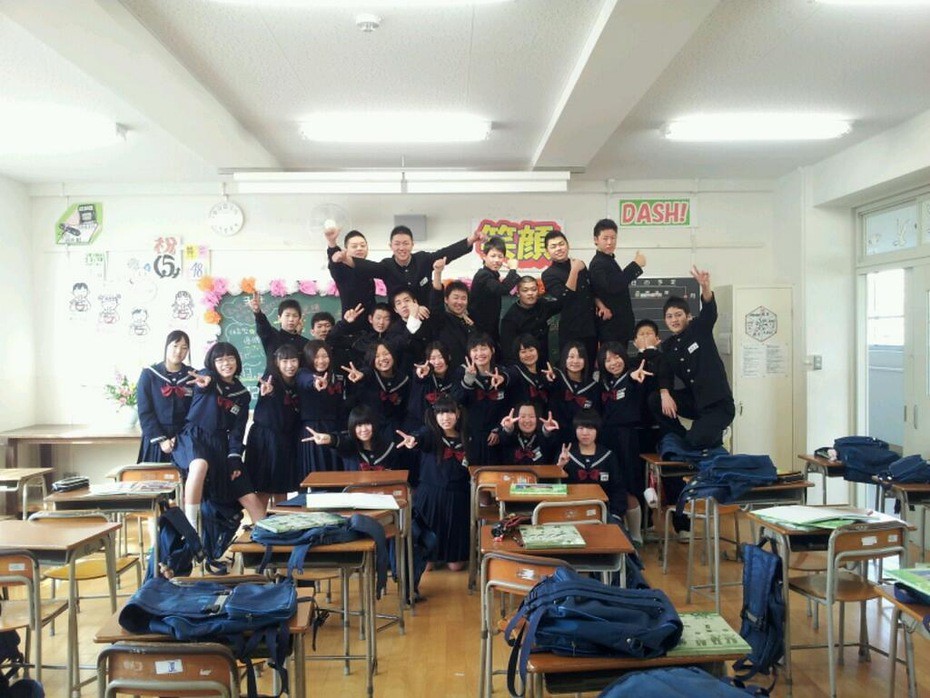
Daily Life of a High School Student in Japan
The daily life of a high school student in Japan is shaped by routine, discipline, and interaction with peers. From the early morning hustle to engaging classroom environments, students experience a structured yet vibrant school life that balances academic rigor with social connections.
Morning Routine and Commuting
For many Japanese high school students, mornings begin around 6:00 AM. On a typical day, students wake up early to prepare for school, often starting with a quick breakfast. Some may take a moment to check their phones or finish any last-minute homework.
Getting to school can vary greatly. Students often travel by:
- Walking: Those who live near their school typically walk, enjoying the fresh air and engaging with friends along the way.
- Bicycling: Riding a bike is a common practice, especially in urban and suburban areas. Many students are seen zipping through streets on their way to class.
- Public transport: For those who commute from further away, trains and buses are the go-to options. In fact, commuting can easily take up to two hours in bustling cities like Tokyo (The Busy Life of a Student Studying in Japan).
This morning commute is often social, as students chat with friends, review notes, or listen to music as they travel. It’s a chance to relax before the school day begins.
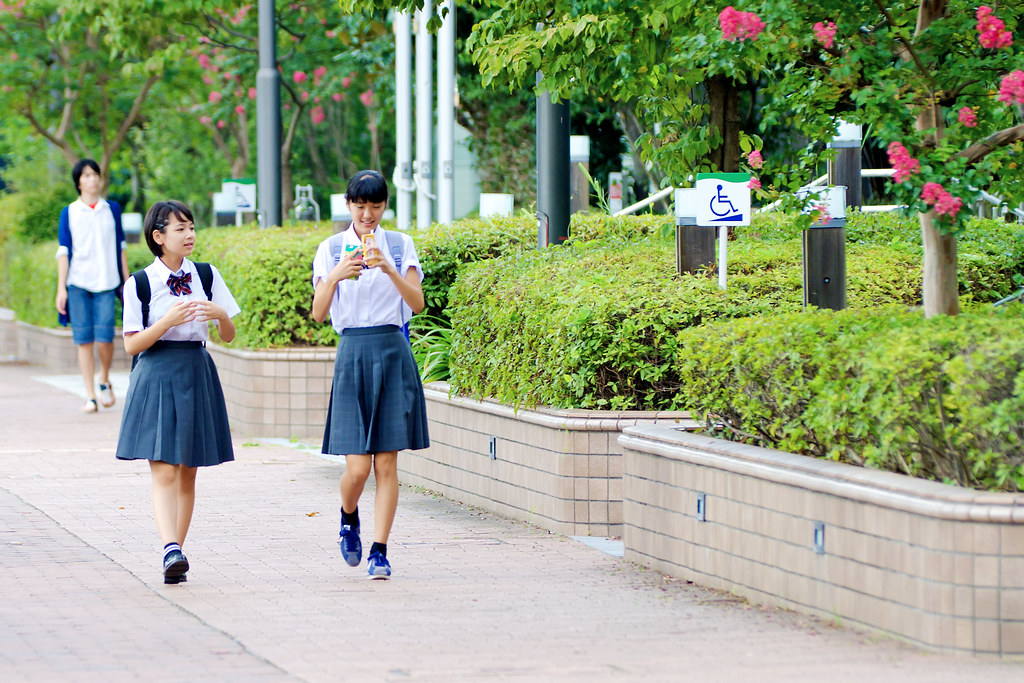
Classroom Environment and Schedule
Once they arrive at school, students settle into a structured setting that involves a unique classroom environment. Typically, they have a homeroom teacher who plays an essential role in their daily lives, guiding them academically and socially.
The typical class schedule spans about 6-8 periods each day, covering subjects such as mathematics, literature, English, and science. Here’s a glimpse of what a typical schedule might look like:
- Morning Assembly: The day often starts with a morning assembly where students gather for announcements and encouragement.
- Core Subjects: Classes are usually around 50 minutes each, with short breaks in between.
- Homeroom: Students return to their homerooms throughout the day for guidance and updates.
- Physical Education: Students engage in physical education, promoting teamwork and fitness.
Classes encourage active participation. Group projects and discussions foster a sense of community, allowing students to share ideas and collaborate. This environment promotes not just academic learning but also social skills vital for life after school (Daily Life in Japanese High Schools | FSI – SPICE – Stanford).
Lunch and Breaks
When the clock strikes noon, it’s lunchtime—a cherished break in the school day. Japanese students typically eat lunch in their classrooms. Many schools offer a nutritious bento made up of rice, fish, meat, and vegetables, reflecting the Japanese focus on a balanced diet.
During lunch, students often:
- Share meals with classmates, reinforcing friendships.
- Participate in a brief clean-up after eating, teaching responsibility and teamwork.
- Engage in conversations about classes, hobbies, or weekend plans.
After lunch, breaks offer a chance to stretch, socialize, or relax. Students often gather in hallways or outdoor areas, enjoying the reprieve from structured learning. These moments are vital for building connections and unwinding before returning to classes.
The combination of a structured routine, social interactions, and engaging learning experiences shapes the daily life of high school students in Japan, making it a unique and enriching journey.
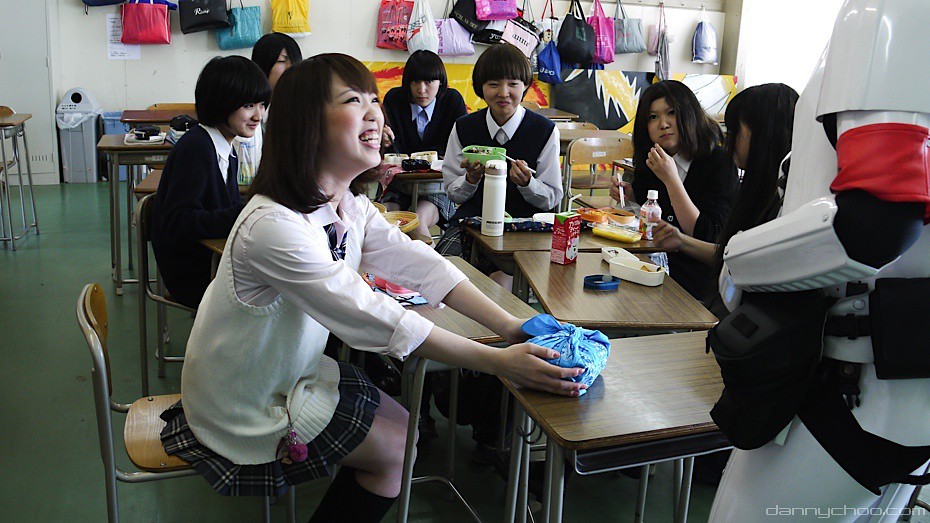
School Culture and Extracurricular Activities
In Japan, school life extends beyond the classroom. Extracurricular activities play a crucial role in shaping a student’s social experience, character development, and overall school culture. Students are encouraged to participate actively, making clubs and organizations an integral part of their high school journey.
Clubs and Organizations
High school clubs in Japan offer a diverse range of activities, catering to various interests and passions. Common types include:
- Sports Clubs: These focus on physical activities like baseball, soccer, basketball, track and field, and swimming. Students develop athletic skills, teamwork, and discipline while forming close bonds with teammates (What is “bukatsudo”? Club activities in Japanese schools).
- Cultural Clubs: These include arts, music, and crafts. Students can explore their creative side through clubs like the brass band, theater, chorus, or art club. Such activities nurture creativity and enhance self-expression (What clubs do Japanese schools have?).
- Academic Clubs: These clubs often focus on specific subjects like science, literature, math, or debate, helping students stay engaged academically while interacting with peers.
Participation in clubs is highly encouraged, as they help students build friendships, develop leadership skills, and foster a sense of community within the school. They serve as a platform for personal growth, allowing students to learn valuable life skills beyond academic performance.

The Role of Senpai and Kohai
In Japanese schools, the relationship between senpai (upperclassmen) and kohai (underclassmen) is fundamental. This mentor-mentee dynamic creates a supportive environment within clubs and school life. Senpai are expected to guide kohai, sharing knowledge and experience while nurturing a sense of belonging. This relationship is often characterized by respect and responsibility.
Here are key aspects of the senpai-kohai system:
- Mentorship: Senpai guide their kohai, helping them navigate school challenges. Whether it’s academic advice or tips for club activities, this relationship is central to personal development (Understanding Senpai-Kohai Relationship Culture in Japan).
- Social Connection: This bond fosters friendships and teamwork. Kohai learn to support their senpai while gaining confidence in their role within the community.
- Cultural Tradition: The senpai-kohai system is rooted in Japanese culture, emphasizing loyalty, respect, and hierarchy. This traditional approach promotes responsibility among older students, as they are expected to lead by example.
Through the senpai-kohai system, students cultivate essential life skills, including leadership, communication, and empathy. This framework enhances the overall school experience, building lasting relationships that extend beyond the classroom (Japan’s senpai and kohai system).
Academics and Homework
High school life in Japan features a unique academic structure where students are guided by tradition and the pursuit of excellence. The culture surrounding education focuses heavily on rigorous study habits and preparation for exams. Here are two important aspects of academic life: after-school academies, known as juku, and the pressure surrounding exam preparation.
After-School Academies (Juku)
Juku, often referred to as “cram schools,” are a significant part of the education system in Japan. They serve as supplementary schools to help students boost their learning after the regular school day ends. These academies provide targeted tutoring in various subjects, primarily focusing on math, science, and foreign languages.
- Extra Support: Juku offers personalized attention, allowing students who may struggle in a conventional classroom to grasp difficult topics. Small class sizes often create a more intimate learning environment.
- Extended Study Hours: Many students attend juku regularly, often after their regular school hours, or even on weekends. This can add several hours of academic work to their already busy schedules.
- Competitive Edge: With college entrance exams placing tremendous importance on academic performance, juku has become a staple for students aiming to secure places in prestigious universities. Many believe these extra classes provide the necessary edge needed to outperform peers.
For a more detailed look at various after-school programs in Japan, visit Nishimachi After School Activities and Japan International School’s Program.

Photo by RDNE Stock project
Exam Preparation and Pressure
For high school students in Japan, university entrance exams represent a defining moment in their academic careers. The preparation for these exams can be intense and often extends beyond classroom hours.
- Cramming Culture: Students frequently experience a culture where studying becomes all-consuming. During the months leading up to entrance exams, schools may even adjust their curriculums to intensify exam preparation.
- Long Hours: Many students spend countless hours at both their main school and juku, sometimes studying late into the night. This relentless pursuit can lead to significant stress and anxiety.
- Peer Competition: The pressure to outperform classmates adds to students’ stress levels. It’s not uncommon for them to compare notes or study schedules, fostering a competitive environment.
- Support Systems: Despite the challenges, students often find solace in peer support and family encouragement, aiming to motivate each other through the tough journey toward exams.
The societal emphasis on academic success and the pressure surrounding entrance exams create a unique and challenging environment for high school students in Japan. For more insights into this phenomenon, explore the Exam Cram culture in Japan and the impact of academic pressure on students, found in this research paper.
Social Life and Relationships
The social fabric of high school in Japan is woven from various threads, primarily friendships and the nature of dating among students. Understanding these elements reveals much about student life and the interactions that shape personal experiences during these formative years.
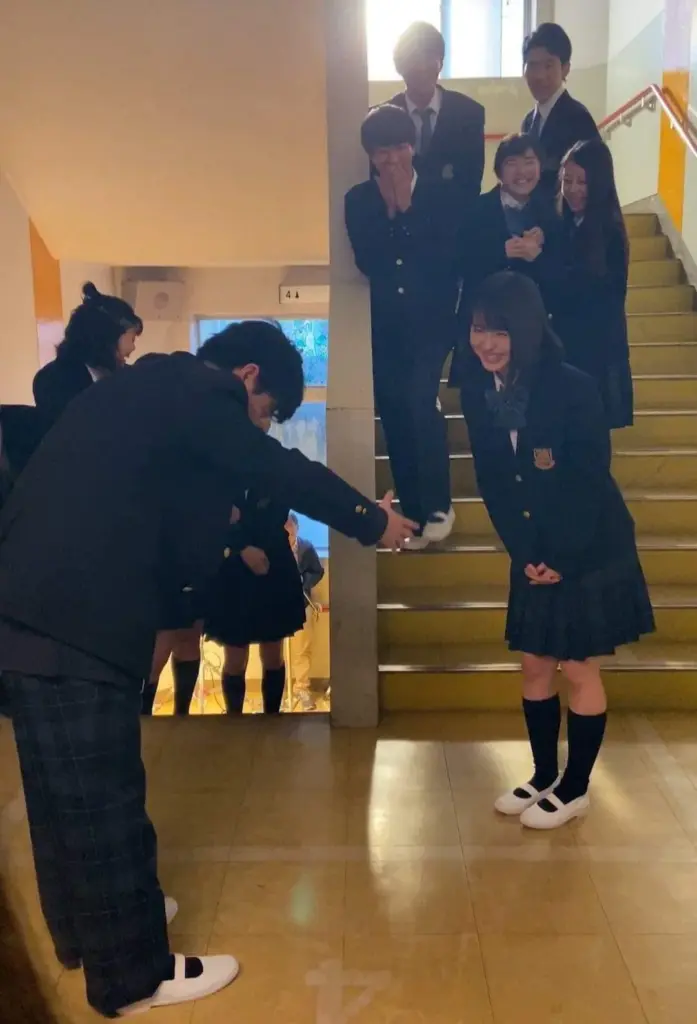
Friendships and Connections
Friendships form an essential part of a high school student’s life in Japan. Students typically spend a lot of time together in a structured environment, which encourages them to bond over shared experiences.
- Classroom Dynamics: Japanese students usually have the same classmates for all subjects throughout the year. This consistent group allows friendships to blossom, as they navigate the challenges of high school together (Quora).
- Shared Activities: Participating in clubs, sports, and after-school programs creates opportunities for deeper connections. Engaging in shared interests fosters teamwork and camaraderie among students.
- Cultural Events: Through school festivals and cultural activities, students bond with each other. These events encourage collaboration and help in building lasting friendships. Meeting new people during these festivities often leads to stronger social ties (Japanese high school students cultivate friendship with peers at Camp Zama).
Friendships in high school are not just about socializing; they often provide crucial emotional support during stressful periods, such as exam preparations. The close-knit friendships formed during these years can last a lifetime.
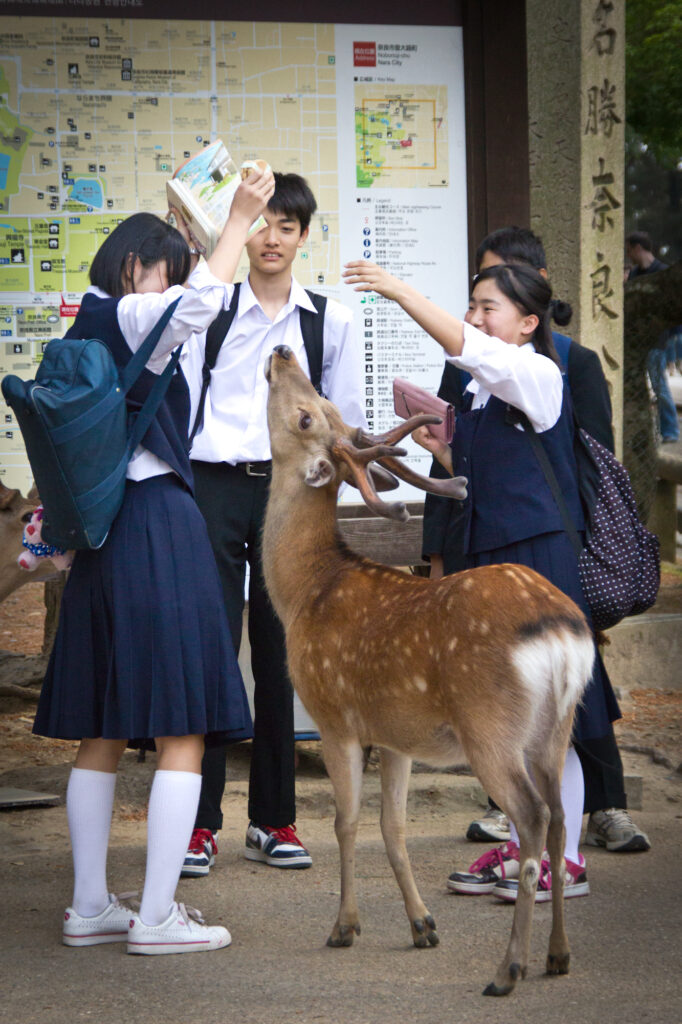
Dating and Personal Time
In terms of dating, opportunities for Japanese high school students are often limited. While many teens experience romantic feelings, cultural norms play a significant role in how and when these relationships begin.
- Cultural Taboos: Dating among high school students is not as open or encouraged as in some other countries. Many schools have unwritten rules against public displays of affection, and dating is typically kept private (Is dating not allowed in Japanese schools?).
- Limited Free Time: With long school hours and the demands of after-school study sessions, students often find it challenging to spend time with friends or engage in romantic relationships. The focus on academic success tends to overshadow personal time.
- Older Partners: Some students may encounter a “culture of dates,” where older individuals seek relationships with younger students. This dynamic can create additional pressure and complicate the dating landscape (A ‘culture of dates’ in Japan targets vulnerable high school girls).
While personal time may be scarce, students usually cherish the moments they get to socialize, whether it’s during breaks, after school, or over the weekends. Each moment spent together adds to the rich tapestry of their high school life.

Challenges Faced by High School Students
High school students in Japan encounter various challenges daily, shaping their academic and social experiences. The intense competition and commitment to education create significant pressure. Two critical challenges include academic pressure and balancing extracurricular activities with studies. Let’s look closer at these issues.
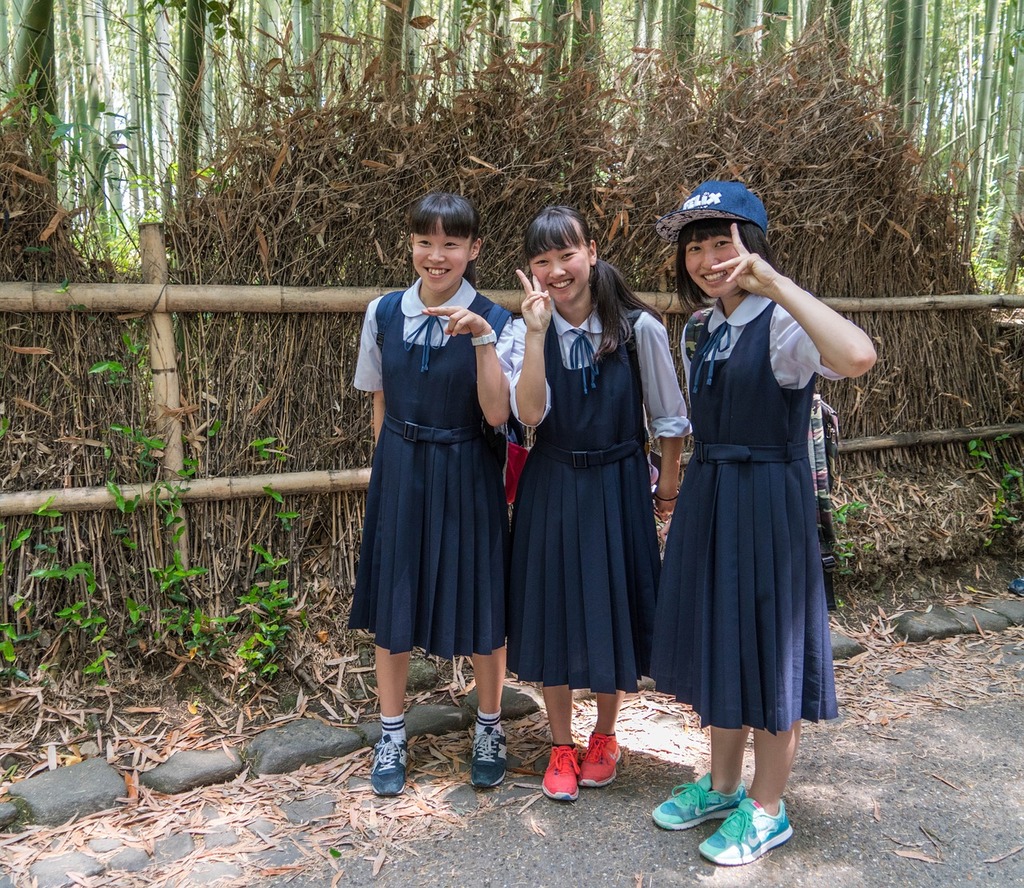
Academic Pressure and Stress
High school students in Japan often feel a tremendous amount of academic pressure. The rigorous education system emphasizes exam preparation and performance, leading to stress and anxiety. Here’s how this manifests:
- High Expectations: Students are expected to excel in their studies to secure spots in prestigious universities. The focus on academic achievements starts early, with parents and teachers pushing for top grades.
- Entrance Exams: The competition for university placements is fierce. Many students attend after-school cram schools, called juku, to gain an edge on their peers (Students reach breaking point in Japan).
- Mental Health Concerns: This pressure often results in mental health issues. A significant portion of students report feelings of anxiety and stress, with some reaching a point of crisis. Nearly 30% of high school students show moderate to severe symptoms of depression (Nearly a Third of Japanese High School Students Show Symptoms of Depression).
Given these pressures, many students find themselves sacrificing personal interests and well-being to meet academic demands. The importance placed on test scores sometimes overshadows their overall development and happiness.

Balancing Extracurriculars and Studies
Another challenge for high school students is managing time between extracurricular activities and academic commitments. Clubs and sports are vital aspects of school culture, but they can also add pressure.
- Time Management: Students often have packed schedules, leaving little time for relaxation or personal interests. Clubs can meet several times a week, and competitions further extend those commitments. Fitting study time into this hectic schedule becomes a juggling act.
- Academic Responsibilities: With regular homework and preparations for exams, students must prioritize tasks effectively. The challenge is exacerbated during busy periods when club activities peak, like tournaments and school festivals (Balancing Your Time as a College Student in Japan).
- Social Connections: While these extracurriculars foster teamwork and friendships, they also create conflicts in time management. Students want to participate fully, but the struggle to balance these commitments with schoolwork can lead to increased stress.
Navigating this balance is crucial for schools to support students’ holistic development while recognizing the importance of academic achievement. For insights into how students manage their time, check out Student Life in Japan: Balancing Tradition and Modernity.

International Students in Japanese High Schools
The journey of international students in Japanese high schools can be both enriching and challenging. Students from abroad gain unique academic experiences, but they also face cultural shifts that require adjustment. Let’s explore the enrollment options available to foreign students and the cultural differences they might encounter as they settle in.
Enrollment Options for Foreign Students
Foreign students looking to enroll in Japanese high schools have several pathways to consider. It’s essential to understand the options available and the requirements that may come with them. Here are some common ways to get started:
- Direct Enrollment: Many high schools in Japan accept foreign students directly. Schools usually require proof of previous education, so applicants need to have completed at least nine years of schooling either in Japan or abroad. This pathway often includes entrance exams focused on subjects like mathematics and Japanese. You can find a list of schools that welcome foreign students on Savvy Tokyo or explore Japan Living Guide for general enrollment information.
- Exchange Programs: Some students may participate in exchange programs that allow them to study in Japan for a year or a specific duration. These programs often cover tuition fees and provide cultural immersion opportunities. If you’re considering this option, check out guidelines on Quora.
- Ministry of Education Guidelines: The Japanese Ministry of Education, Culture, Sports, Science and Technology offers guidelines for foreign students wishing to enroll in schools. Familiarizing yourself with these regulations can help in the application process. For more details, consult the ministry’s resources on Japanese public school enrollment.
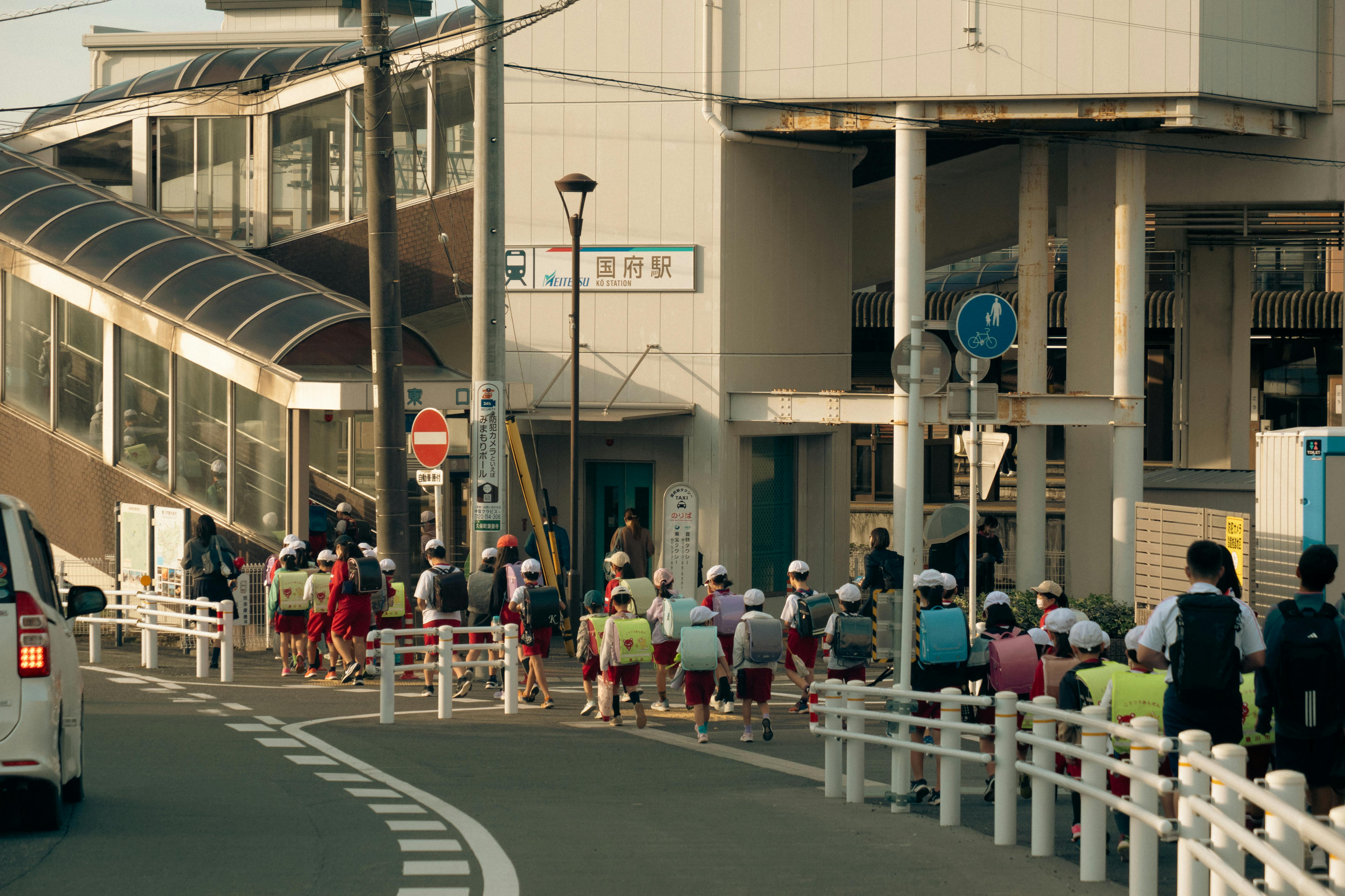
Photo by Tien Nguyen
Cultural Adjustments
Moving to a new country can be an overwhelming experience, especially for students. Adjusting to life in Japan involves understanding cultural differences and adapting accordingly. Here are some common cultural challenges international students may encounter:
- Language Barrier: One of the most significant obstacles is the language barrier. While some high schools offer English programs, proficiency in Japanese is crucial for social interactions and understanding class material. Engaging in language exchange programs or taking Japanese language classes can be helpful.
- Social Norms: Japanese culture places a strong emphasis on respect, politeness, and collective harmony. International students may find it challenging to navigate the subtleties of communication, including non-verbal cues and indirect expressions. Understanding these norms can help foster better relationships with peers. For insights into culture shock and adjustments, you can read more on Culture Shock in Japan or ways to cope with cultural transitions from Students Abroad.
- Daily Life Adjustments: Social customs, such as bowing instead of shaking hands or removing shoes when entering homes, might be unfamiliar. Learning about these practices beforehand can ease discomfort and help students feel more integrated.
Additionally, international students often experience feelings of homesickness or loneliness. Establishing connections with fellow students or participating in school clubs can ease these feelings and create a sense of community.
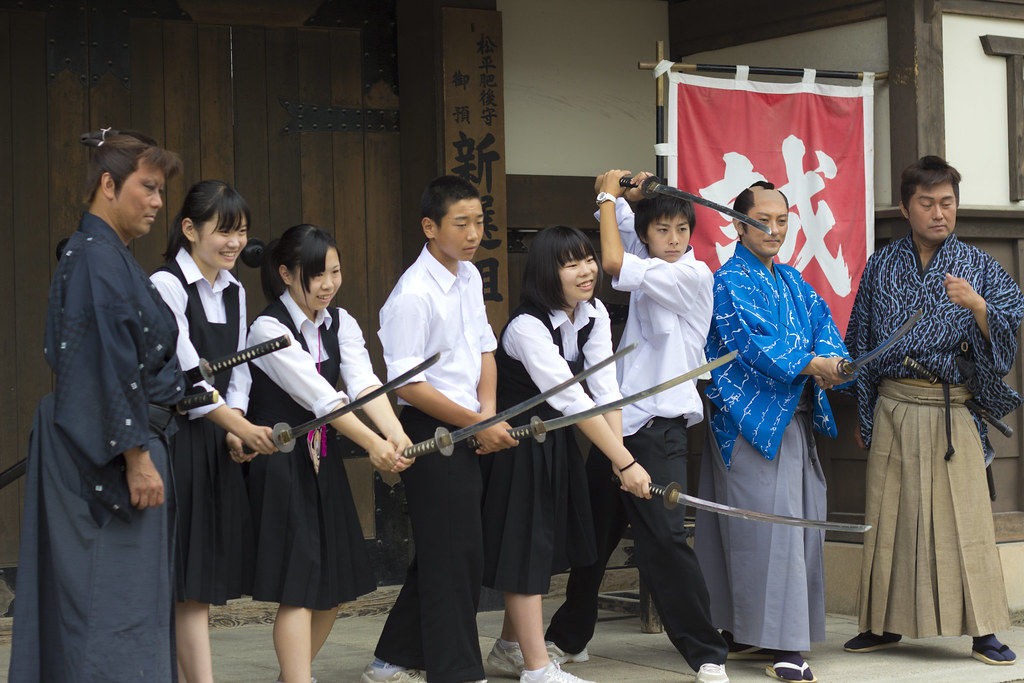
Conclusion
Being a high school student in Japan is a unique experience defined by academic rigor and cultural traditions. From structured school days to vibrant extracurricular activities, students navigate a system that emphasizes discipline and community.
They face significant challenges, such as intense academic pressure and balancing school with recreational pursuits. Yet, friendships formed during this time often last a lifetime.
For those interested in Japan, learning about high school life offers valuable insights into the country’s culture and education system. What aspects of Japanese high school life intrigue you the most? Share your thoughts below and continue exploring this fascinating world!

